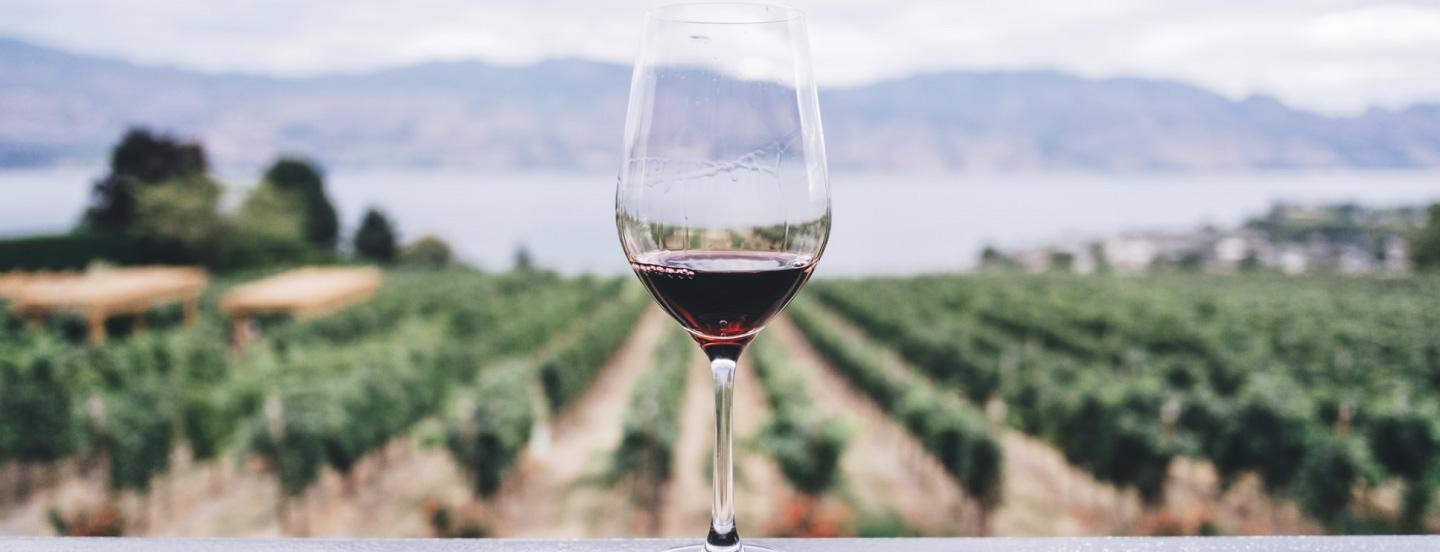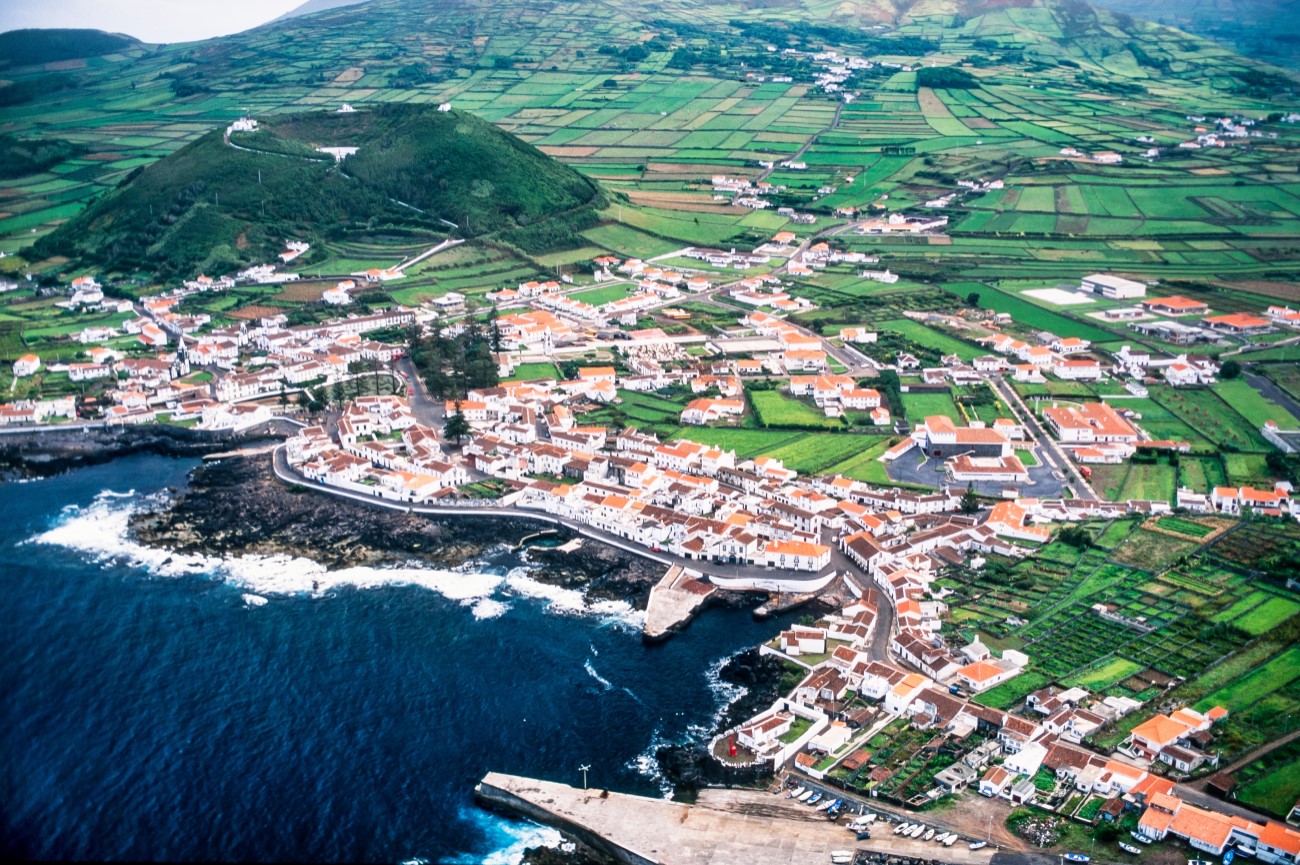
By Rolando Silva
A Rare Vineyard in the Ocean
Some wine regions are characterized by extensive valleys, others by sun-baked hillsides. The Azores? They are shaped by the sea. In the middle of the Atlantic, nearly a thousand miles from continental Europe, the nine islands of the Azores rise like green fortresses from the waves. They are volcanic, rugged, and often windswept. Yet, against all odds, people here have been coaxing grapes from the black basalt since the 15th century.
Wine in the Azores is not an afterthought; it is a symbol of survival. Vines grow in tiny stone corrals called currais, built stone by stone to shield the plants from salt spray and Atlantic winds. From above, these corrals look like a mosaic of dark rectangles running straight to the ocean. They are so extraordinary that UNESCO declared the Pico Island vineyard culture a World Heritage Site.
Visiting these vineyards is not like going to Napa or Bordeaux. There are no endless rolling hills of grapes here. Instead, you’ll walk narrow lanes of lava stone, touch walls warmed by the sun, and taste wines that carry the unmistakable imprint of salt, smoke, and sea. Wine tourism in the Azores is less about prestige and more about discovery — a journey into resilience, flavor, and history.
A Short History of Azorean Wine
When Portuguese navigators settled the Azores in the early 15th century, they brought vines with them. The climate, at first glance, seemed unfriendly: too wet, too windy, and too salty. Yet the volcanic soils were fertile, and the settlers learned to adapt. They built miles of dry-stone walls to protect their vines, creating the unique vineyard landscape that survives today.
By the 17th century, Azorean wine had earned a reputation far beyond the islands. Verdelho from Pico and Terceira was exported to England, America, and even the courts of Russia. Records show that bottles of Pico wine were served at the tables of Catherine the Great. For island communities with limited resources, wine was not just a drink but a lifeline — a source of trade, income, and prestige.
The 19th century, however, brought disaster. First came oidium (powdery mildew), then phylloxera, which devastated vines across Europe. The Azores were hit hard. Many vineyards were abandoned, and production plummeted. It was only in the late 20th century, through the dedication of local farmers and innovative winemakers, that Azorean wine began its comeback.
Today, the Azores are once again recognized on the wine map. Indigenous grapes such as Verdelho, Arinto dos Açores, and Terrantez do Pico flourish. Small wineries craft bottles that critics describe as mineral, salty, and refreshingly electrifying. For travelers, this renaissance offers a rare opportunity: to taste history reborn.
The Three Wine Islands: Pico, Terceira, and Graciosa
Not all Azorean islands produce wine, but three stand out for their heritage and their visitor experiences.
Pico Island: The UNESCO Vineyard Landscape
If wine has a heart in the Azores, it beats the strongest on Pico. This is the island of stone walls, stretching for nearly 2,500 acres along the western coast. Walking here feels like stepping into an ancient puzzle. Vines curl in pockets of black rock, the Atlantic foams just meters away, and Mount Pico — Portugal’s highest peak — looms in the background.
The Criação Velha vineyards are the crown jewel, a UNESCO-protected site where you can wander trails through the maze of currais. It’s a surreal experience, particularly at sunset when the lava rocks glow orange and the ocean shimmers silver.
Wineries to visit:
- Azores Wine Company – Founded by António Maçanita and partners, this modern winery has put Pico back on the world wine stage. Tastings here are more like experiences: flights of whites that taste like sea spray, paired with Azorean cheeses and stories about the revival of Terrantez do Pico. The winery also offers design-forward rooms if you want to wake up among the vineyards.
- Cooperativa Vitivinícola da Ilha do Pico – A co-op with decades of history, offering tastings that reflect the communal effort behind Pico’s viticulture.
Pico is not just about wine. Combine tastings with a climb up Mount Pico, a whale-watching trip from Madalena, or a dip in natural lava pools.
Terceira Island: The Wines of Biscoitos
Terceira is best known for its colorful capital, Angra do Heroísmo, a UNESCO city of cobbled streets and grand squares. But head to the north coast, and you’ll find the vineyards of Biscoitos.
Here, the basalt walls are lower, the plots smaller, and the wines distinctive. Traditionally, Biscoitos was famous for fortified wines made from Verdelho, but today you’ll also find crisp whites with a saline tang. The region even has a Wine Museum, where you can see traditional presses and learn how locals kept wine culture alive through centuries of hardship.
Tasting here feels intimate. Many producers are small family operations, welcoming visitors into adegas (wine cellars) that feel more like homes than businesses.
Pair your tasting with a swim at the Biscoitos natural pools, where basalt cliffs form turquoise swimming holes. Few places let you move so easily between wine glass and ocean wave.
Graciosa Island: The Gentle Whites
Graciosa is one of the smallest Azorean islands, often overlooked by travelers. But for wine lovers, it holds quiet treasures. Its vineyards, clustered around Santa Cruz da Graciosa, produce whites known for their lightness and subtle floral notes.
The landscape here is gentler than Pico — rolling fields rather than dramatic lava flows — but the wine carries the same volcanic fingerprint. Visiting Graciosa feels like stepping into a slower rhythm of life. You might taste wine in a simple cellar, share stories with a winemaker, and then wander streets where horse carts still clatter past stone houses.
For travelers seeking authenticity over polish, Graciosa’s wine scene is a hidden gem.
What Azorean Wines Taste Like
So, what does wine grown in the middle of the Atlantic actually taste like?
- Freshness and Acidity: These are cool-climate wines, with bright acidity that makes them excellent food partners.
- Salt and Minerality: Many tasters describe a saline edge, a flavor that feels almost like the sea breeze itself.
- Unique Grapes: Indigenous varieties dominate, offering flavors you won’t find elsewhere. Verdelho brings citrus and spice, and Arinto dos Açores is vibrant and mineral, while Terrantez do Pico offers complexity and aging potential.
- Fortified Legacy: Some producers still make fortified wines in the old style — rich, amber-hued, and reminiscent of Madeira.
This combination makes Azorean wines both approachable and surprising. They’re not blockbuster reds or buttery whites; they’re wines of character, rooted in place.
Experiences for Travelers
Wine tourism in the Azores is not just about tastings. It’s about immersion. Here are some of the most memorable ways to connect with the culture:
- Walk the Vineyards: Trails in Criação Velha (Pico) let you step directly into the UNESCO landscape. Bring sturdy shoes — the lava stones are uneven.
- Harvest Participation: Some wineries invite visitors to join grape picking in late summer, followed by communal meals with local dishes. Imagine crushing grapes with your feet under a starry sky.
- Food Pairings: Many tastings come with local cheese, seafood, or cured meats. The tang of island goat cheese against a salty white wine is unforgettable.
- Stay Among the Vines: Wineries like Azores Wine Company offer stylish lodging. Traditional adegas have been converted into guesthouses where you wake up surrounded by basalt and vines.
- Cultural Museums: The Wine Museum in Biscoitos offers insight into centuries of ingenuity. On Pico, old distilleries showcase antique copper stills and presses.
Pairing Wine with the Azores
The Azores are a destination of layers. You might spend the morning hiking volcanic craters, the afternoon swimming in natural pools, and the evening sipping a Verdelho that carries the memory of the sea you just swam in. Wine here is not a separate attraction; it’s woven into the landscape.
Some perfect pairings:
- A glass of Arinto dos Açores with freshly caught limpets grilled on lava rock.
- Verdelho alongside octopus stewed in red wine — a Pico specialty.
- A fortified Biscoitos wine with sweet rice pudding flavored with cinnamon.
Each sip ties you closer to the islands’ identity: volcanic, maritime, resilient, and generous.
Practical Tips for Wine Travelers
- Best Time to Visit: May through October offers good weather and the chance to see vineyards at their most active. Harvest (late August–September) is especially engaging.
- Book Ahead: Many wineries are small. Tours and tastings often require reservations.
- Transportation: Renting a car is essential on most islands. Guided tours are an option if you’d prefer not to drive.
- Combine Experiences: Don’t just focus on wine. Add whale watching, hiking, or hot springs to round out your trip.
- Buy Locally: Some rare grape varieties produce limited bottles. Buying directly at the winery ensures you get the best selection.
Why Wine Tourism in the Azores Matters
The Azores are not just another stop on the global wine circuit. They represent something rarer: a wine culture that nearly vanished, now carefully restored. Every sip of Arinto dos Açores or Terrantez do Pico carries centuries of persistence, adaptation, and pride.
For travelers, this is the chance to taste a story. To walk vineyards that are UNESCO treasures. To sit at wooden tables where locals pour wine with the same hands that built the stone walls outside. To experience wine not as luxury, but as heritage.
And perhaps that is the greatest lesson of Azorean wine: that beauty comes not from ease, but from struggle. The vines fight salt and wind, the people fought disease and decline, and what remains is extraordinary.
So if your travels take you to Portugal, consider heading beyond Lisbon, Porto, or the Algarve. Fly west into the Atlantic. Step onto Pico, Terceira, or Graciosa. Walk the black-stone paths, taste the salty whites, and let the Azores remind you that the best wines are not just about what’s in the glass — they’re about where you are when you drink them.









